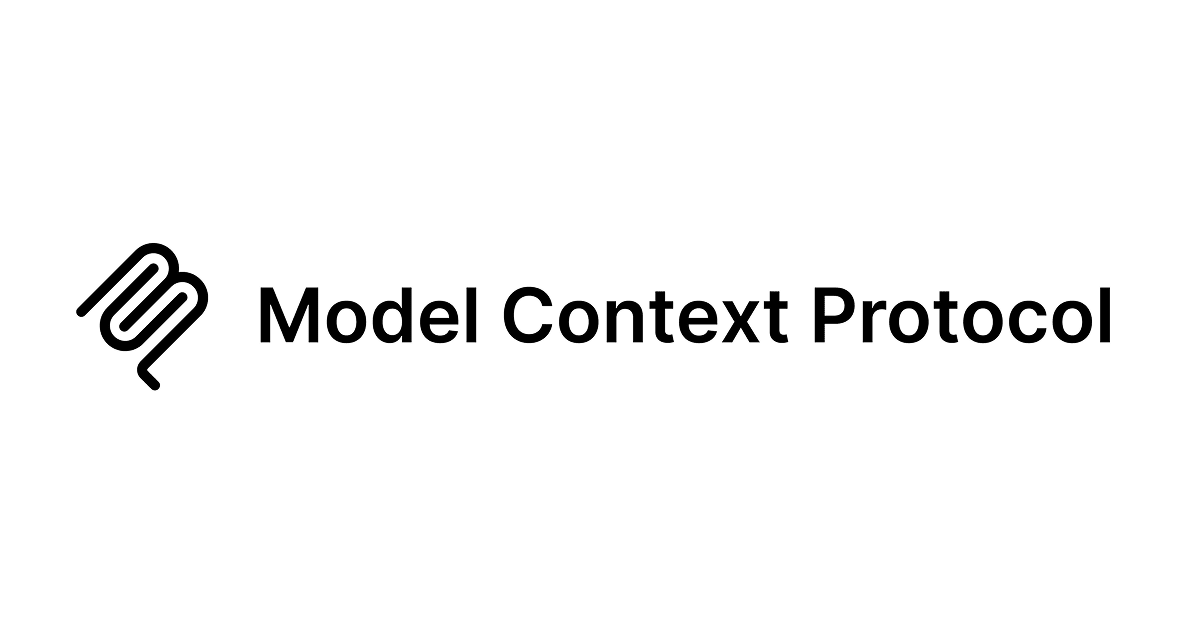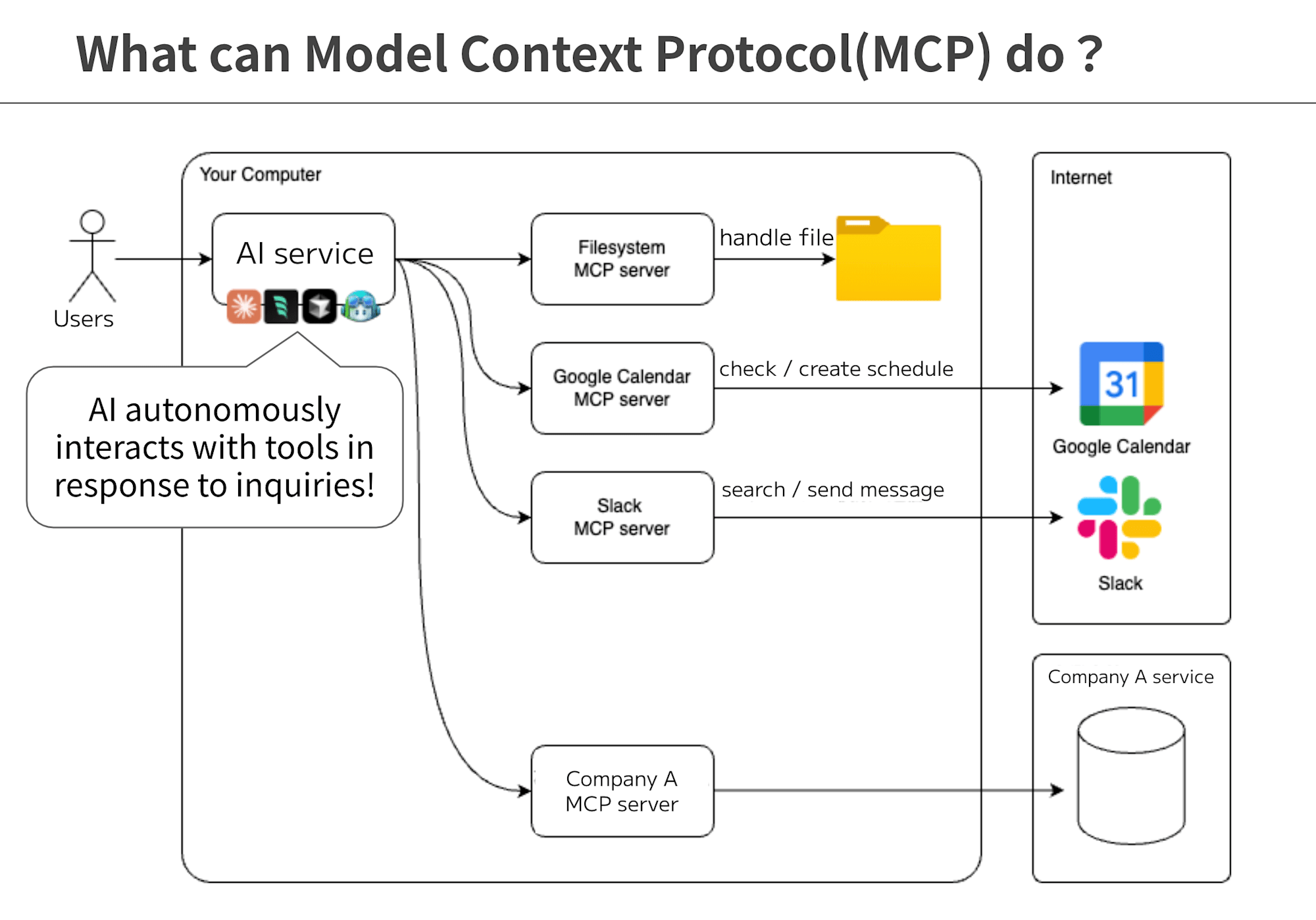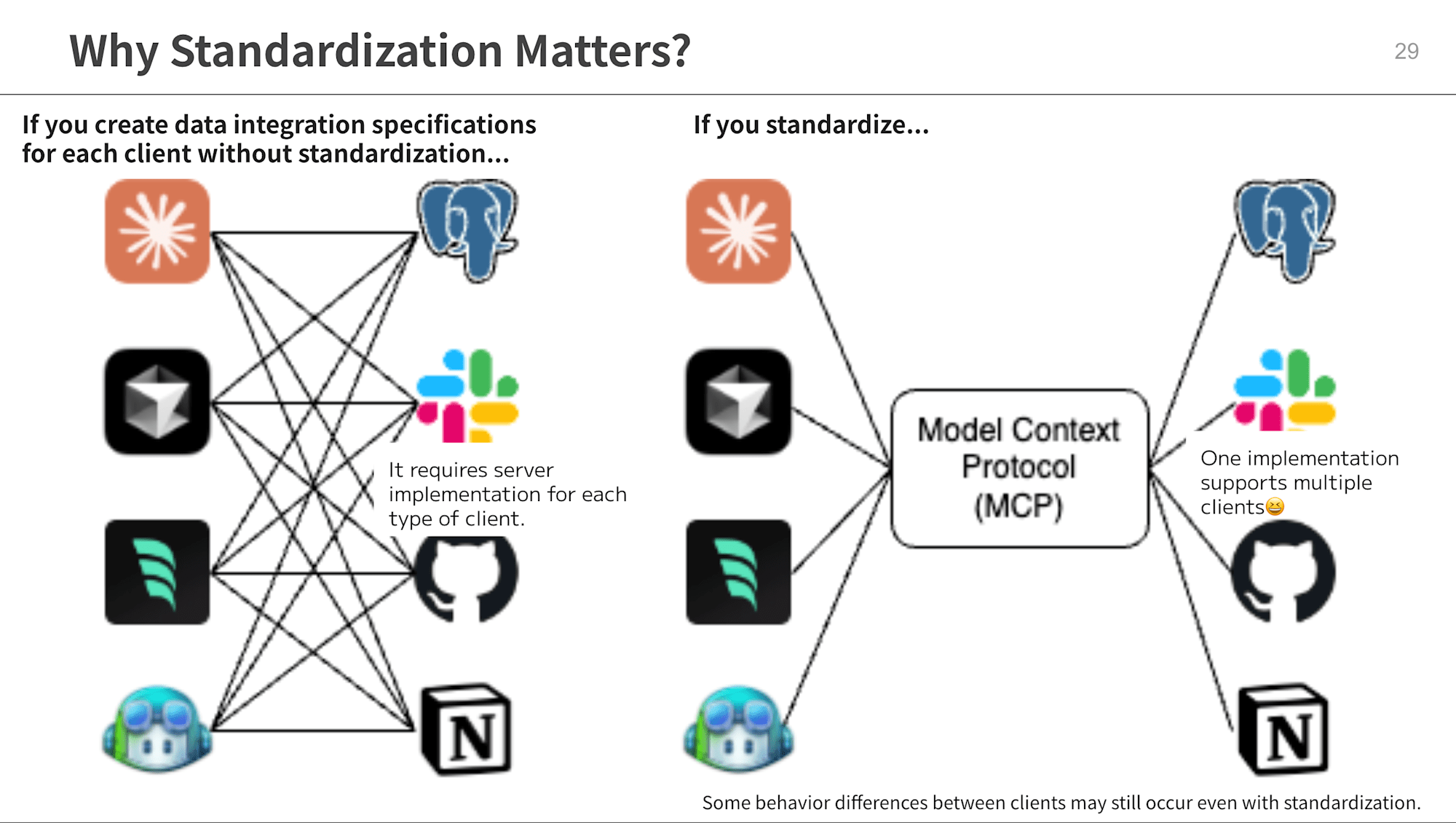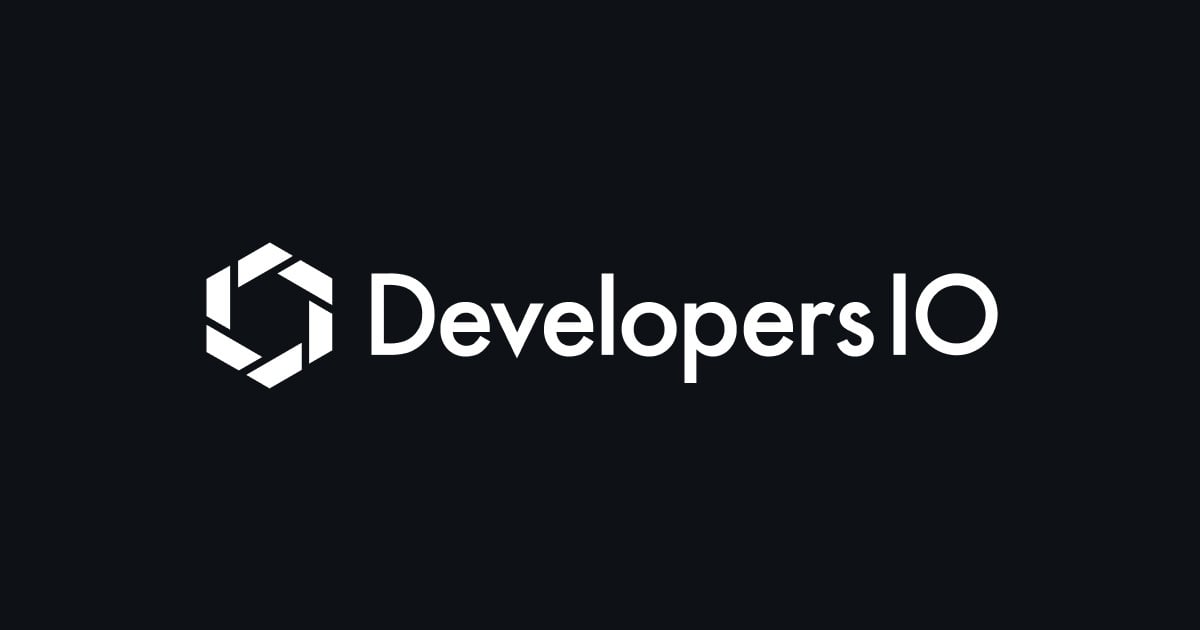
Unlocking the Power of MCP: What is the Model Context Protocol and Why Does It Matter?
Hello, everyone!
This is Jiu from the Global team at Classmethod.
Recently, MCP—short for Model Context Protocol—has become a hot topic in the tech world. At Classmethod, we held a free online webinar covering this exciting subject, and I’d love to share some key takeaways with you here.
Let’s dive into what MCP is, how it works, and how companies are starting to use it in real-world scenarios.
What is MCP (Model Context Protocol)?
MCP is an open standard designed to allow large language models (LLMs) to interact with external tools and data safely and efficiently. It was introduced by Anthropic in November 2024.
Often referred to as the "USB port of AI," MCP standardizes how communication happens between AI clients and tools. This reduces the need for building individual integrations for every application.
So, what exactly can it do?
Imagine this: a user interacts with an AI assistant like ChatGPT. Normally, the assistant can’t access your local files, schedule meetings, or post to Slack. But with MCP, the AI can autonomously connect with tools like Google Calendar, Slack, or internal databases—simply by interpreting natural language commands.
To give a clearer idea:

Picture an employee on the left and an AI service like Claude or ChatGPT on the right, communicating through MCP to automate and streamline tasks.
※ note ⚠️ : As of now, ChatGPT does not yet support MCP. (02.05.2025)
With MCP integration, here are some example use cases:
- File system MCP Server: Access local files to streamline business tasks.
- Google Calendar MCP Server: Check and create schedule entries.
- Slack MCP Server: Send and receive messages automatically.
- Other service MCP Servers: Enable competitive edge through seamless AI-tool integration.
In the webinar demo, we saw Claude integrate with Slack and Google Calendar to automatically post a user’s available meeting times. This is especially useful when scheduling with external partners, saving time and avoiding errors. MCP removes the hassle of manual data handling.
Watch the demo here: https://www.youtube.com/watch?v=20RL7bcSXPc&t=1s
How MCP Works
MCP defines a standardized way for AI tools (known as MCP clients)—such as Claude and GitHub Copilot—to connect to different services (MCP servers). Rather than requiring custom code for each tool-service pair, MCP provides a universal protocol for communication.
Why Standardization Matters
Without MCP, each tool needs unique integration code for every service. With MCP, one integration allows support across all MCP-compatible clients, greatly boosting efficiency.

Why MCP is Gaining Popularity
Developers are embracing MCP to streamline AI-driven workflows. Major tech companies like AWS, GitHub, LINE, and Microsoft are already adopting it.
Real-World Applications
Workflow Automation: AI can handle routine tasks like posting updates to Slack or generating reports without manual effort.
UI Generation: With tools like Figma MCP servers, AI can help design user interfaces. Providing additional context boosts accuracy.
Data Services: Companies can make product information searchable and support-friendly through MCP-enabled AI interfaces.
Future Vision: AI Agents Collaborating
In early 2025, Google proposed an even broader idea: Agent-to-Agent Protocols. This would allow AI agents to collaborate—for example, one agent forecasting demand and another managing orders. MCP would act as the infrastructure enabling this collaboration.
Challenges
MCP is still evolving and comes with some challenges:
- Multi-step toolchains can be slow.
- Local installations may pose security risks (e.g., high-level permissions or credential storage). Solutions like Remote MCP and stronger authentication protocols are actively being developed.
Conclusion
MCP is a promising technology that’s bridging the gap between AI and real-world tool usage. By enabling flexible, natural language-driven interactions, it improves productivity and sets the stage for smarter automation.
Thanks for reading 📖!
About the author
My name is Jiu.
I’m currently studying for the AWS Machine Learning Specialty (MLA) certification, and I plan to keep sharing what I learn about AI and ML here on the blog. I’m really happy that I can translate and publish our company’s know-how in English—and I want to keep doing more of it! 😊
Stay tuned for more posts coming soon!





